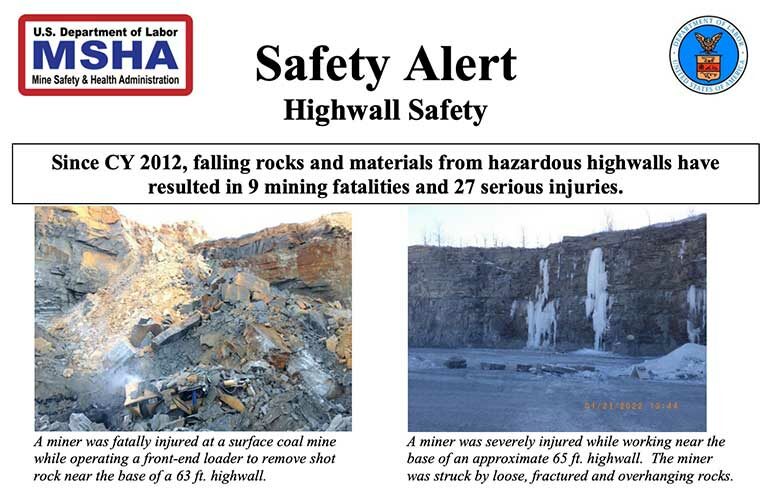Miner deaths and injuries prompt MSHA alert on hazardous highwalls

Arlington, VA — In response to a number of fatalities and serious injuries involving miners working near highwalls in recent years, the Mine Safety and Health Administration has issued a safety alert on the associated hazards.
MSHA defines a highwall as “the unexcavated face of exposed overburden and material on an open face or bank.” Since 2012, the agency has recorded nine worker deaths and 27 serious injuries caused by falling rocks and materials from hazardous highwalls. The alert details one recent incident in which a miner was severely injured after being struck by loose, fractured and overhanging rocks while near the base of a 65-foot highwall.
MSHA’s best practices for working safely near highwalls include:
- Train miners to recognize highwall hazards.
- Develop and follow a plan for the safe control of all highwalls where miners work and travel in close proximity to the highwall.
- Conduct highwall examinations and ensure before work starts that hazards such as loose rocks, overhangs and trees are taken down or supported. Examine more frequently after rain, freezing and thawing.
- Restrict highwall height to allow available equipment to safely scale it. Should benching be necessary, provide adequate bench width based on the equipment being used.
- Create blasting plans, use proper blasting techniques and examine highwalls after blasting.
Post a comment to this article
Safety+Health welcomes comments that promote respectful dialogue. Please stay on topic. Comments that contain personal attacks, profanity or abusive language – or those aggressively promoting products or services – will be removed. We reserve the right to determine which comments violate our comment policy. (Anonymous comments are welcome; merely skip the “name” field in the comment box. An email address is required but will not be included with your comment.)

